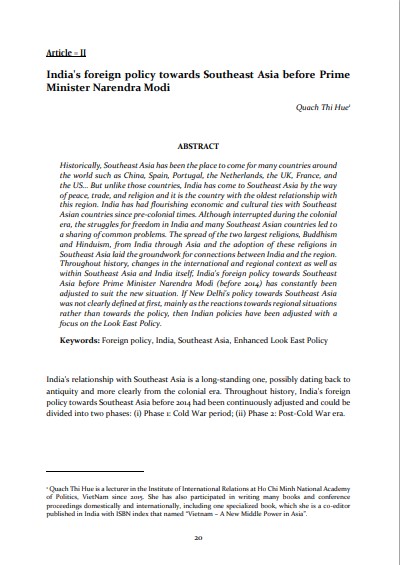India's foreign policy towards Southeast Asia before Prime Minister Narendra Modi
DOI:
https://doi.org/10.54945/jjia.v1i6.56Abstract
Historically, Southeast Asia has been the place to come for many countries around the world such as China, Spain, Portugal, the Netherlands, the UK, France, and the US… But unlike those countries, India has come to Southeast Asia by the way of peace, trade, and religion and it is the country with the oldest relationship with this region. India has had flourishing economic and cultural ties with Southeast Asian countries since pre-colonial times. Although interrupted during the colonial era, the struggles for freedom in India and many Southeast Asian countries led to a sharing of common problems. The spread of the two largest religions, Buddhism and Hinduism, from India through Asia and the adoption of these religions in Southeast Asia laid the groundwork for connections between India and the region. Throughout history, changes in the international and regional context as well as within Southeast Asia and India itself, India's foreign policy towards Southeast Asia before Prime Minister Narendra Modi (before 2014) has constantly been adjusted to suit the new situation. If New Delhi's policy towards Southeast Asia was not clearly defined at first, mainly as the reactions towards regional situations rather than towards the policy, then Indian policies have been adjusted with a focus on the Look East Policy







